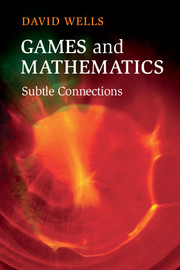Book contents
- Frontmatter
- Contents
- Acknowledgements
- Part I Mathematical Recreations and Abstract Games
- Part II Mathematics: game-like, scientific and perceptual
- 6 Game-like mathematics
- 7 Euclid and the rules of his geometrical game
- 8 New concepts and new objects
- 9 Convergent and divergent series
- 10 Mathematics becomes game-like
- 11 Mathematics as science
- 12 Numbers and sequences
- 13 Computers and mathematics
- 14 Mathematics and the sciences
- 15 Minimum paths: elegant simplicity
- 16 The foundations: perception, imagination, insight
- 17 Structure
- 18 Hidden structure, common structure
- 19 Mathematics and beauty
- 20 Origins: formality in the everyday world
- References
- Index
13 - Computers and mathematics
Published online by Cambridge University Press: 05 November 2012
- Frontmatter
- Contents
- Acknowledgements
- Part I Mathematical Recreations and Abstract Games
- Part II Mathematics: game-like, scientific and perceptual
- 6 Game-like mathematics
- 7 Euclid and the rules of his geometrical game
- 8 New concepts and new objects
- 9 Convergent and divergent series
- 10 Mathematics becomes game-like
- 11 Mathematics as science
- 12 Numbers and sequences
- 13 Computers and mathematics
- 14 Mathematics and the sciences
- 15 Minimum paths: elegant simplicity
- 16 The foundations: perception, imagination, insight
- 17 Structure
- 18 Hidden structure, common structure
- 19 Mathematics and beauty
- 20 Origins: formality in the everyday world
- References
- Index
Summary
The computer has given us the ability to look at new and unimaginably vast worlds. It has created mathematical worlds that would have remained inaccessible to the unaided human mind, but this access has come at a price. Many of these worlds, at present, can only be known experimentally.
[Borwein et al. 2009]We have already seen that the game of Nine Men's Morris and a crucial question about Hex have been solved using computers. Computers have an obvious and powerful role in exploring mathematical recreations such as pentomino puzzles which are hard for human brains to grasp but which can be attacked head on by brute force computing power. Today their incredible power is also used for summing sequences, finding relationships between sets of numbers which we suspect are connected in some way, and creating amazing visual images – the Mandelbrot set is the best-known example – so that mathematicians can, literally, see what they are doing. Not only can computers display geometrical figures and show them moving as the parameters of the problem are changed but they can display the behaviour of series and sequences in graphical form – and observation within this new and dynamic world can not only suggest conjectures and calculates data, but also ideas for proofs.
It is plausibly no coincidence that two of the greatest mathematicians of all time, Leonard Euler and Karl Friedrich Gauss, were both calculating prodigies who kept their arithmetical abilities into adulthood. Gauss, especially, relied upon generating data and pattern spotting for many of his results in number theory. As he explained, he obtained many of his results, ‘through systematic experimentation’ [Mackay 1994] adding on another occasion that, “I have had my results for a long time, but I do not know yet how I am to arrive at them” [Asimov & Shulman 1988: 115].
- Type
- Chapter
- Information
- Games and MathematicsSubtle Connections, pp. 142 - 147Publisher: Cambridge University PressPrint publication year: 2012



